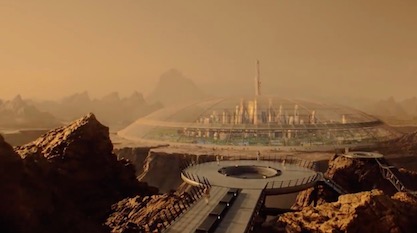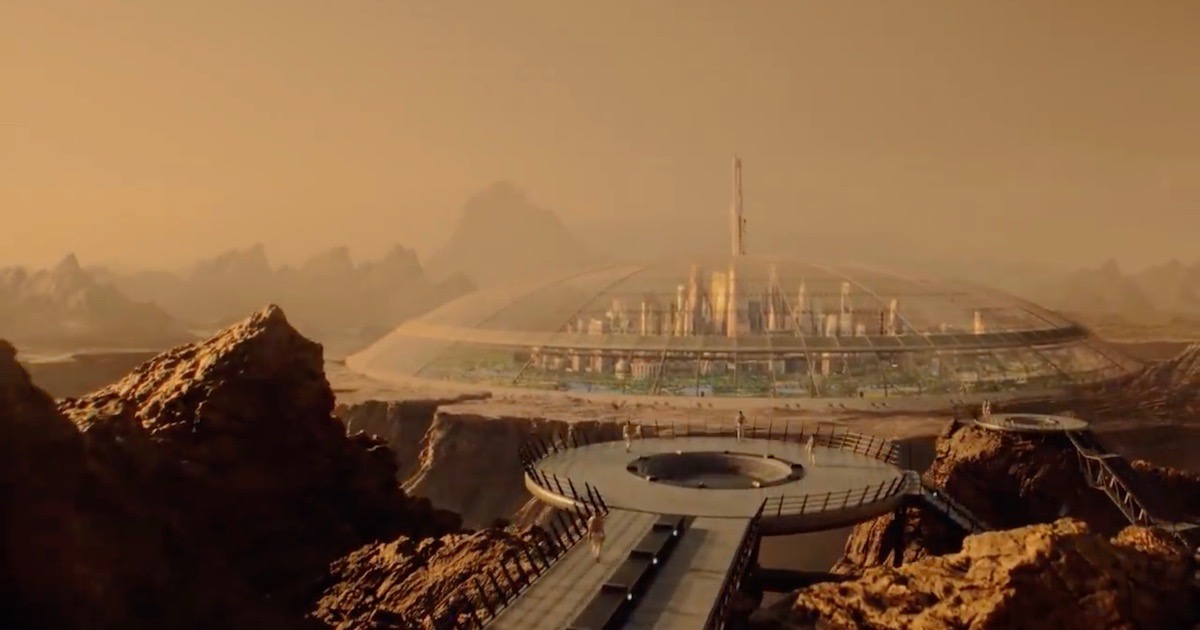 Physics, Earth & Space
Physics, Earth & Space
Tyson and Cosmos Sound the Climate Alarm Again


The new Cosmos season, “Possible Worlds,” concludes tonight. From its March 9 debut, overshadowed by other concerns in the culture and awkwardly seeking to advance the late Carl Sagan rather than host Neil deGrasse Tyson as its public face, the series has declined steadily in viewership. That’s a shame because like the 2014 reboot, with its distortions of science and history, Cosmos 3.0 provides many a helpful teaching moment. We have already documented quite a few of those. (See links below.)
The Cosmos episode that aired last Monday, “Coming of Age in the Anthropocene,” was no exception. Tyson and company revisit a topic covered in Cosmos 2.0. They again chide us for failing to heed the demands of the most aggressive activists on the issue of climate change (aka global warming aka global climate disruption). For a summary of the relevant questions involved in the debate, see Jay Richards’s excellent review of that earlier episode. As a cause for global alarm, the climate does seem a bit like yesterday’s news. One irony here is that, beset by a virus that might obey a flu-like pattern of receding with seasonal warm weather, many Americans this year will welcome the summer heat like never before.
Reasonable Skepticism
Dr. Tyson, in any event, aims at our hearts. Throughout the episode he cuddles a cute baby in his arms. The baby represents our future, our hope. The Cosmos host and writers are trying to scare us into climate action before it’s too late. Just to make sure we don’t miss the implication of the foretold climageddon, they end with a scene of a desert landscape littered with empty upright baby bottles, looking like grave markers.
Tyson claims that the consequences of man-made global warming are already upon us, as evidenced by “heightened flooding of coastal cities, mass death of ocean reefs caused by ocean warming, increase in intensity of catastrophic storms, lethal heat waves and droughts, and runaway wildfires of unprecedented magnitude.” About all of this, however, there is reasonable cause for skepticism. On hurricanes, see here and here. On tornadoes, here. Wildfires, here, here, here, and here. Reefs, here, here, and here. Heat waves, here and here. Drought, here and here. Sea level, here and here.
The Manabe-Wetherald Model
We are treated to a historical piece on the Japanese climate scientist Syukuru Manabe, who with Richard T. Wetherald published an influential climate model paper in 1967 on the sensitivity of the climate to a doubling of CO2. It was the first climate paper to show that increasing CO2 warms the climate in a detailed model (something that no climate scientist involved in this debate denies). It also helped to identify what telltale signs we should be looking for in the atmosphere due to CO2 increase. Tyson implies that people who doubt the climate activists’ claims doubt basic science proven fifty years ago.
That is misleading. Although a huge step in climate modeling at the time and rightly deserving praise, the Manabe-Wetherald model should only be looked at today in a pedagogical and historical light. Incredibly, Tyson implies we should trust its results because it has proved an accurate prediction of climate since then (the writers seem to be taking their cue from a Forbes article). But the paper was not about predicting climate. It was a climate sensitivity analysis.
Any resemblance of the recent climate to the Manabe-Wetherald model output is coincidental. Their model greatly simplified or ignored physics, chemistry, oceanography, and biology that is now considered essential in climate models. For example, the model did not include aerosols or geography (a single damp surface for the whole planet). The atmosphere was treated as a one-dimensional column (or latitudinally averaged for some runs). They held the cloud fraction constant at the present observed level; yet clouds remain the most uncertain aspect of modern climate models. In a follow-up 1975 paper Manabe and Wetherald warned that “it is not advisable to take too seriously” their specific numbers. Clearly, Tyson and company did not heed that warning.
Climate Change and the Coronavirus
Recent leading models that are designed to predict the climate are consistently overestimating global temperatures. During the present coronavirus threat we can learn some valuable lessons about model predictions. Case in point: the failure of a leading coronavirus model to predict the number of deaths from infections should cause us to be more circumspect about climate model predictions. After all, there are far more physical processes (many poorly understood) involved with climate models than there are in modeling the spread of a virus. It could very well be the case that we just cannot make predictions in these two cases for the desired timescales and to the level of precision that we would like.
Editor’s note: Find further reviews and commentary on the third season of Cosmos, “Possible Worlds,” here:
- “Cosmos Franchise Loses Viewers, While Pumping for Materialism”
- “Neil deGrasse Tyson and Cosmos Peddle the Myth that Copernicus Demoted Earth”
- “Another Cosmos Episode, Another Sermon from Pastor Tyson”
- “Medicine, Religion, and Cosmos — Was Andrew Cuomo Wrong to Invoke God?”
- “Cosmos Episode 6 — That’s Entertainment! (But Is It Science?)”
- “The Biggest Myth So Far in Cosmos 3.0 — Baruch Spinoza as Science Hero”
- “New Cosmos Episodes: Only Part of the Story”
- “Counterprogramming for Cosmos 3.0: Two New Videos from Science Historian Mike Keas”
- “Cosmos 3.0 Revisits Themes of the Past, with Familiar Historical Mythmaking”
- “Cosmos 3.0 with Neil deGrasse Tyson Arrives Tonight at 8 PM, Somewhat Dented”
Image: Screenshot from the trailer for Cosmos 3.0, “Possible Worlds.”
